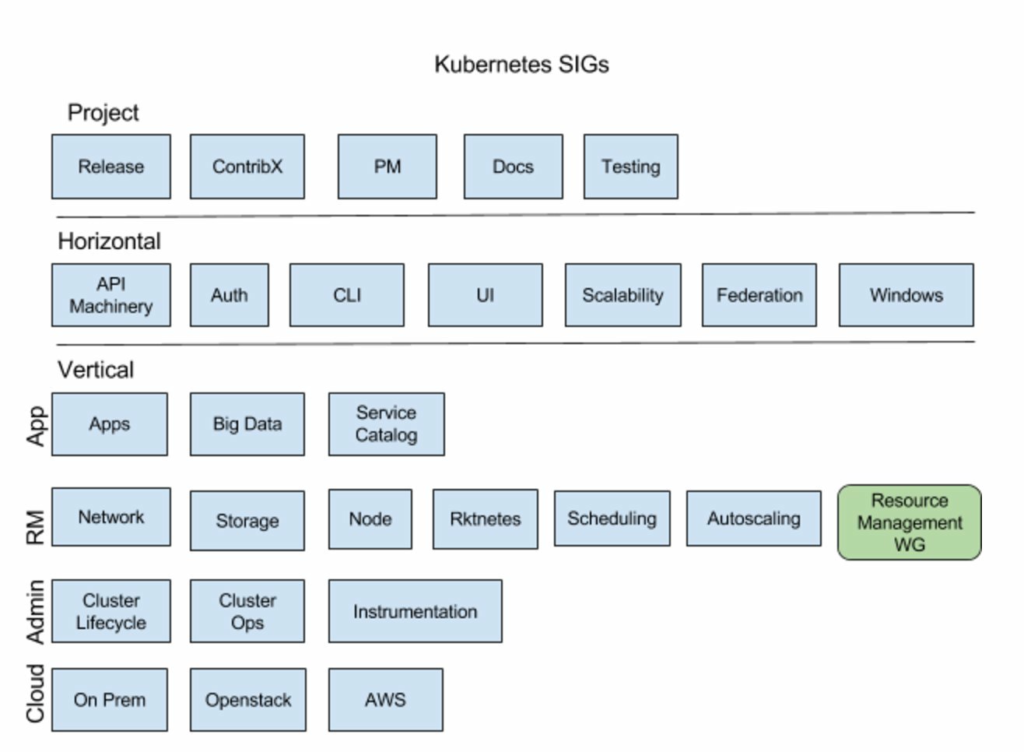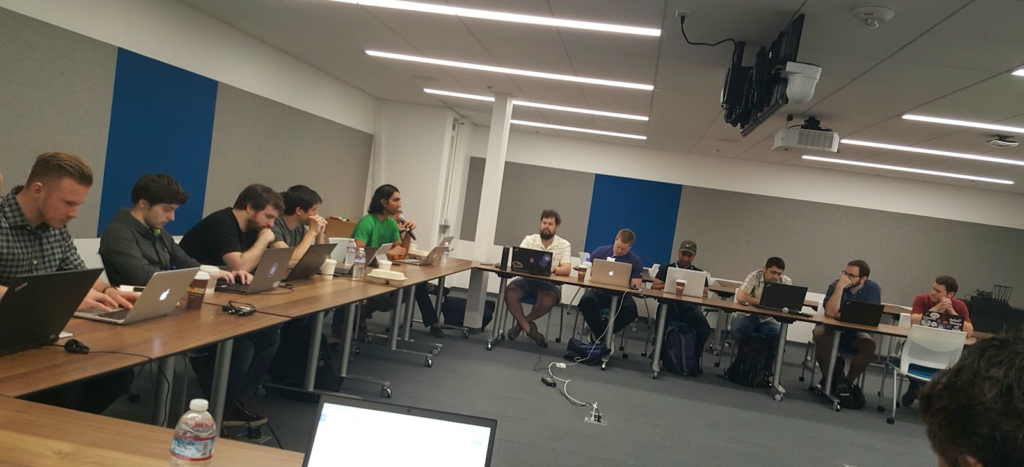After extensive development/feature [discussions](https://docs.google.com/document/d/1p7scsTPzPyouktBFTxu4RhRwW8yUn5Lj7VGY9SaOo-8/edit?ts=5824ee1f) during the Kubernetes Developer Summit 2016 after [CloudNativeCon | KubeCon Seattle](http://events.linuxfoundation.org/events/kubecon/program/schedule), we decided to [formalize](https://groups.google.com/d/msg/kubernetes-dev/Sb0VlXOM8eQ/La3YCe2-CgAJ) our loosely organized group. In January 2017, the Kubernetes _[Resource Management Working Group](https://github.com/kubernetes/community/tree/master/wg-resource-management)_ was formed. This group (led by Derek Carr from Red Hat and Vishnu Kannan from Google) was originally cast as a temporary initiative to provide guidance back to sig-node and sig-scheduling (primarily). However, due to the cross-cutting nature of the goals within the working group, and the depth of [roadmap](https://docs.google.com/spreadsheets/d/1NWarIgtSLsq3izc5wOzV7ItdhDNRd-6oBVawmvs-LGw/edit) quickly uncovered, the Resource Management Working Group became its own entity within the first few months.
Recently, Brian Grant from Google (@bgrant0607) posted the following image on his [Twitter feed](https://twitter.com/bgrant0607/status/862091393723842561). This image helps to explain the role of each SIG, and shows where the Resource Management Working Group fits into the overall project organization.

{.big-img}
To help bootstrap this effort, the Resource Management Working Group had its first face-to-face kickoff meeting in May 2017. Thanks to Google for hosting!
